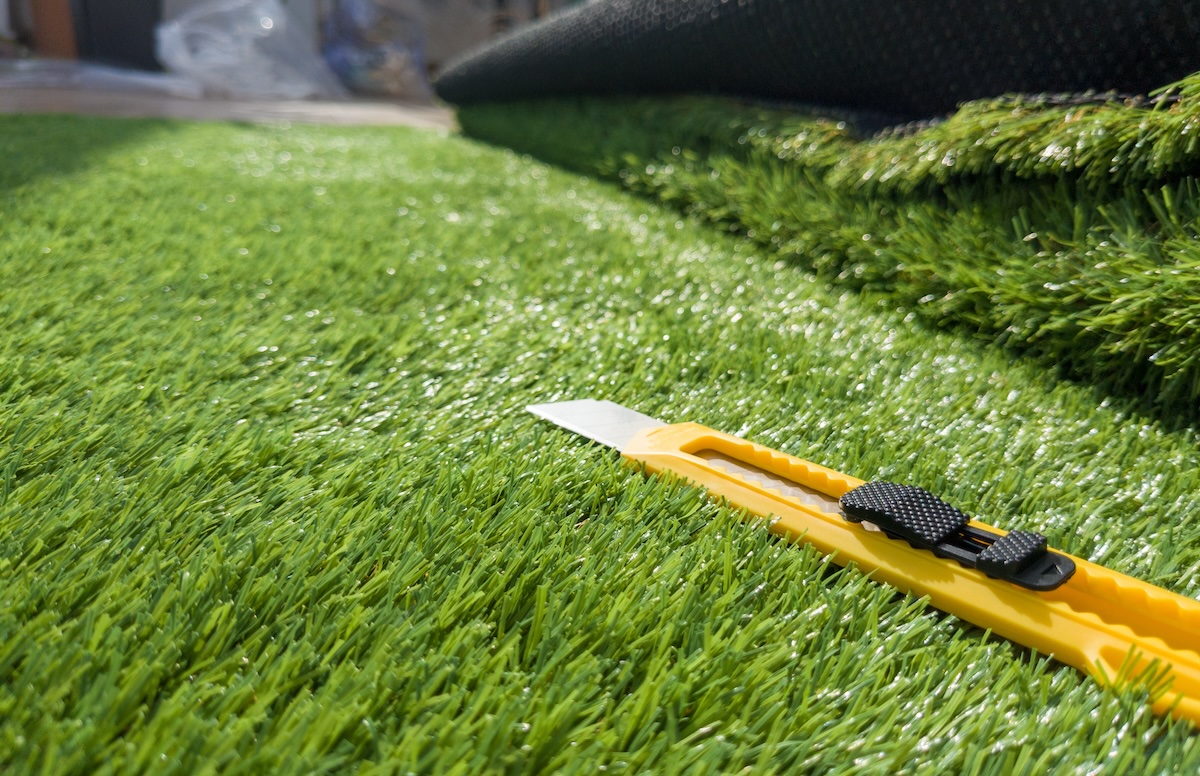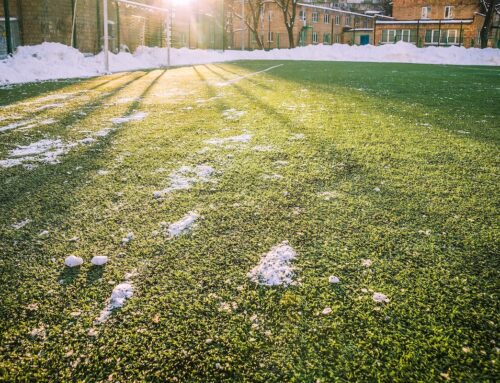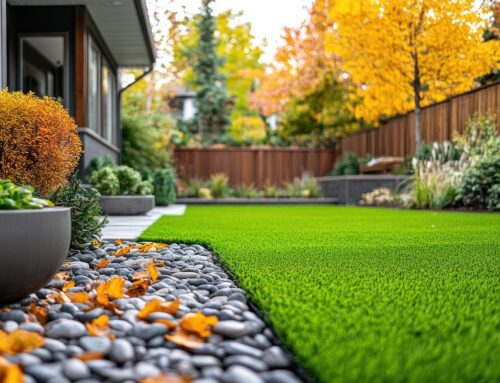Last Updated on October 28, 2025 by ReTurf
Artificial turf remnants are brand-new pieces of synthetic grass that come from the leftover ends of full production rolls or excess stock from large projects. They’re not used or recycled turf. Instead, they’re new material, just cut to shorter or irregular lengths
They occupy a unique middle ground between full commercial turf rolls and secondhand artificial turf materials. They’re brand-new, high-quality synthetic grass products—cut from fresh production batches or leftover from larger projects—that are again, simply sold in irregular/shorter lengths. Thus, what used to be considered “surplus stock” has become an increasingly sought-after category for homeowners and contractors who want to stretch budgets without sacrificing performance.
It’s important to note that artificial turf remnants are not damaged or defective—they simply didn’t meet a specific project’s size or shape requirements. Because they come from the same production runs used for sports complexes, training facilities, and landscape installations, the fibers, backing, and drainage performance are identical to new retail turf—just available in more flexible quantities.
Using new remnant turf is becoming a more common way to reduce material waste while keeping projects within budget. It serves as an introduction to professional-grade turf systems for smaller projects and specialized applications where ordering full rolls would be unnecessary.
What Makes Remnant Turf Different?
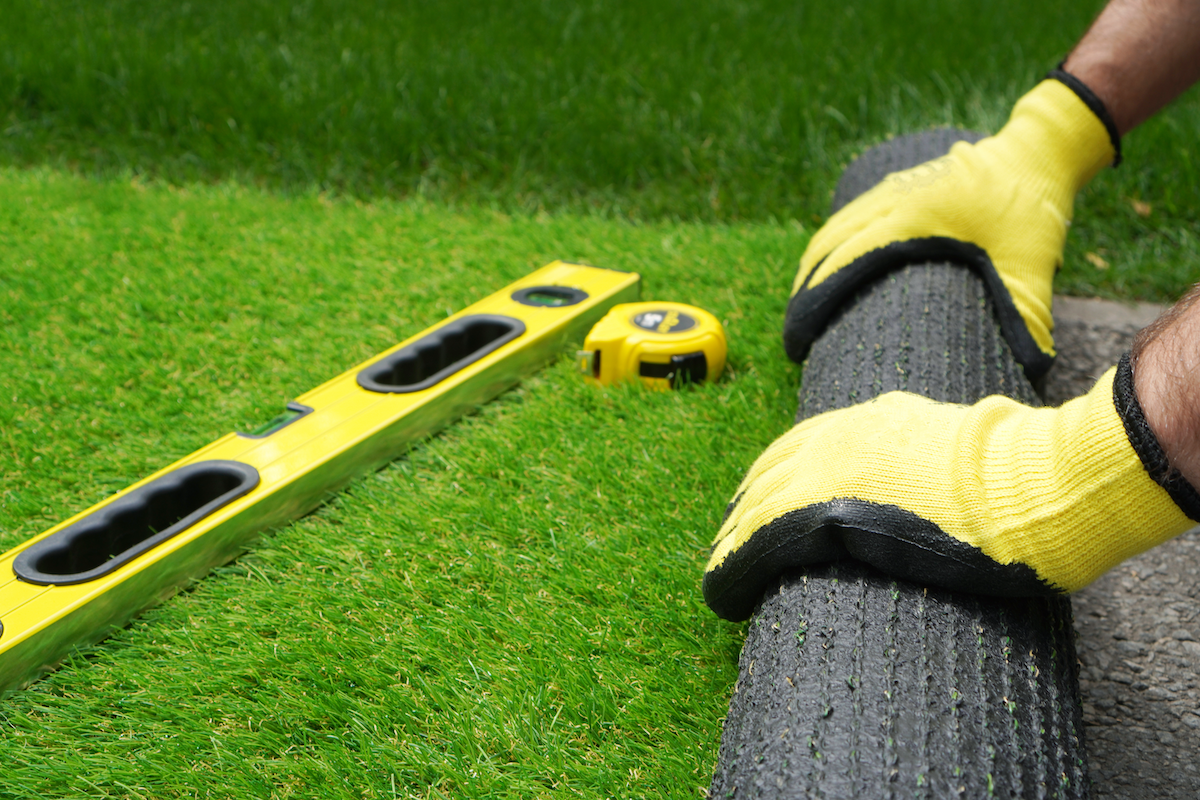
The distinction lies primarily in scale and logistics. Standard artificial turf rolls are manufactured in consistent 12- to 15-foot widths and continuous lengths often exceeding 100 feet. Remnant stock consists of leftover portions from those same rolls—typically anywhere from 20 feet to just under a full roll.
While these dimensions may not suit a regulation-sized sports field, they’re ideal for batting cages, training lanes, residential play spaces, and decorative landscapes. The materials themselves—polyethylene or nylon fibers stitched into a multi-layered polyurethane or latex backing—maintain the same durability ratings and UV (ultraviolet light) resistance as the full-length products.
What buyers gain with remnant turf is flexibility. You can cover a patio, pet run, or event area without ordering industrial quantities or waiting through custom production lead times. For larger projects, multiple remnants can be joined with proper seam tape and infill leveling to create continuous, visually uniform surfaces.
Advantages Beyond Cost Savings
Remnant turf often attracts attention for its lower price, but the practical advantages extend further:
- Material Efficiency: Purchasing remnant rolls helps divert usable materials from disposal or long-term storage, supporting sustainable supply chains.
- Shorter Lead Times: Because remnants are in stock, shipping is often immediate—an advantage for seasonal sports programs or contractors working under tight deadlines.
- Versatile Sizing: Available in variable lengths, they suit everything from narrow side yards to multi-lane indoor facilities.
- High-Grade Construction: The fibers, pile heights (commonly 1.75″ to 2.25″), and drainage backings meet the same standards as those used in new turf systems.
- Color Variety: Depending on the batch, you may find different shades of green or multi-tone blends, offering design flexibility for blended surfaces or training zones.
While cost savings can reach 60–90% compared to new retail rolls, the true value lies in adaptability. For many smaller projects, remnants make it possible to install commercial-grade turf where it otherwise wouldn’t fit the budget.
New Remnant Turf vs Used Turf
The terminology surrounding surplus turf can be confusing, especially since “remnant” and “used” are often listed side by side by suppliers. The two categories, however, describe completely different types of material and should be evaluated separately when planning a project.
- New artificial turf remnants are sections of unused turf left over from manufacturing or distribution. They may come from the end of a production roll, from overstock that exceeded a project’s final measurements, or from discontinued color runs. In every case, the product itself is new—it has never been installed or exposed to weather. The fibers retain their full height and color uniformity, and the backing remains free of adhesive residue or compaction. These remnants perform exactly like standard full-size rolls and are simply sold in smaller or irregular dimensions.
- Used artificial turf originates from fields, training facilities, or large landscape installations that have been decommissioned. After removal, it is cleaned, trimmed, rehabilitated, and rolled for resale.
From a sustainability standpoint, both play a role in extending the life cycle of synthetic turf materials. Remnants help manufacturers minimize production waste, while reclaimed turf keeps older installations out of landfills.
How Turf Remnants Are Created
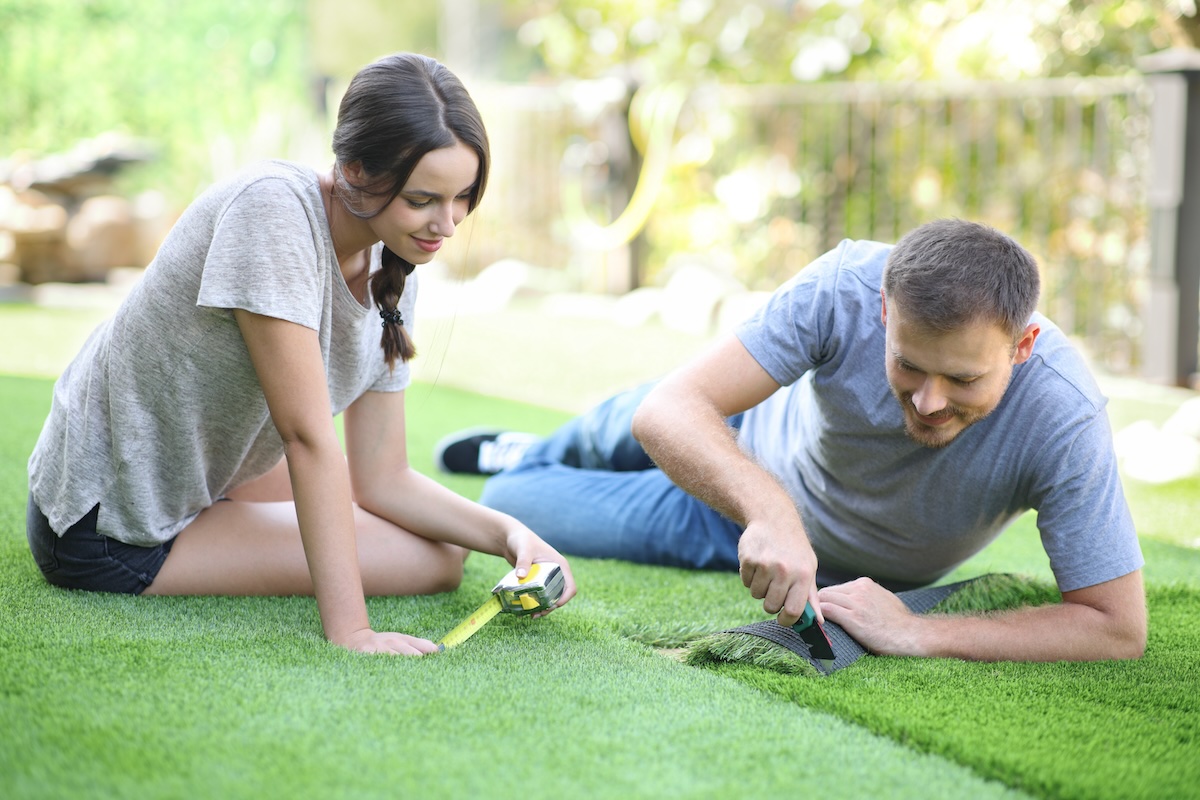
Artificial turf remnants exist for a range of practical reasons, most of them routine byproducts of large-scale production and project planning. Turf is manufactured in long, continuous rolls—typically 12 to 15 feet wide and over 100 feet in length. Once an order is cut to meet the exact dimensions of a field or landscape installation, the leftover portion at the end of the roll often remains unused. These leftover lengths, usually anywhere from 20 to 80 feet long, are what the industry calls remnants.
This is the most common source of new remnants: standard production overruns or offcuts/unneeded portions that were cut but never installed. They remain in new condition, still rolled, and are simply sold separately rather than returned to inventory for full retail distribution.
Other remnants arise from changes during manufacturing or project adjustments. Occasionally, a production batch might yield more material than required for a confirmed order, leaving a few rolls unallocated. Color tone variations between dye lots can also lead manufacturers to classify certain rolls as remnants, since even minor shade differences prevent them from being paired seamlessly on large, uniform installations. In some cases, design updates or field layout revisions by contractors create surplus material that’s returned unused—still new, just no longer matched to a specific job.
Remnants can also come from discontinued product lines. When a manufacturer transitions to a new fiber blend, pile height, or backing formulation, any remaining inventory from the older line is often sold as remnant stock. The material quality remains identical to its full-price equivalent; it’s simply reclassified because it no longer aligns with current catalog specifications.

While all these scenarios differ, what unites them is that the material itself has never been used or installed. The backing remains clean, the fibers uncompressed, and the roll maintains its original structural integrity. For homeowners, designers, and contractors, this makes remnants a reliable way to access some of the most realistic looking, professional-grade turf without entering the used or reclaimed market.
Each remnant piece still carries the core properties of synthetic turf—UV stabilization, tuft bind strength, and permeability—but may vary slightly in color tone, roll width, or backing style depending on its batch origin. For this reason, installers often inspect and measure each roll before installation to ensure consistency across joined seams or adjacent panels.
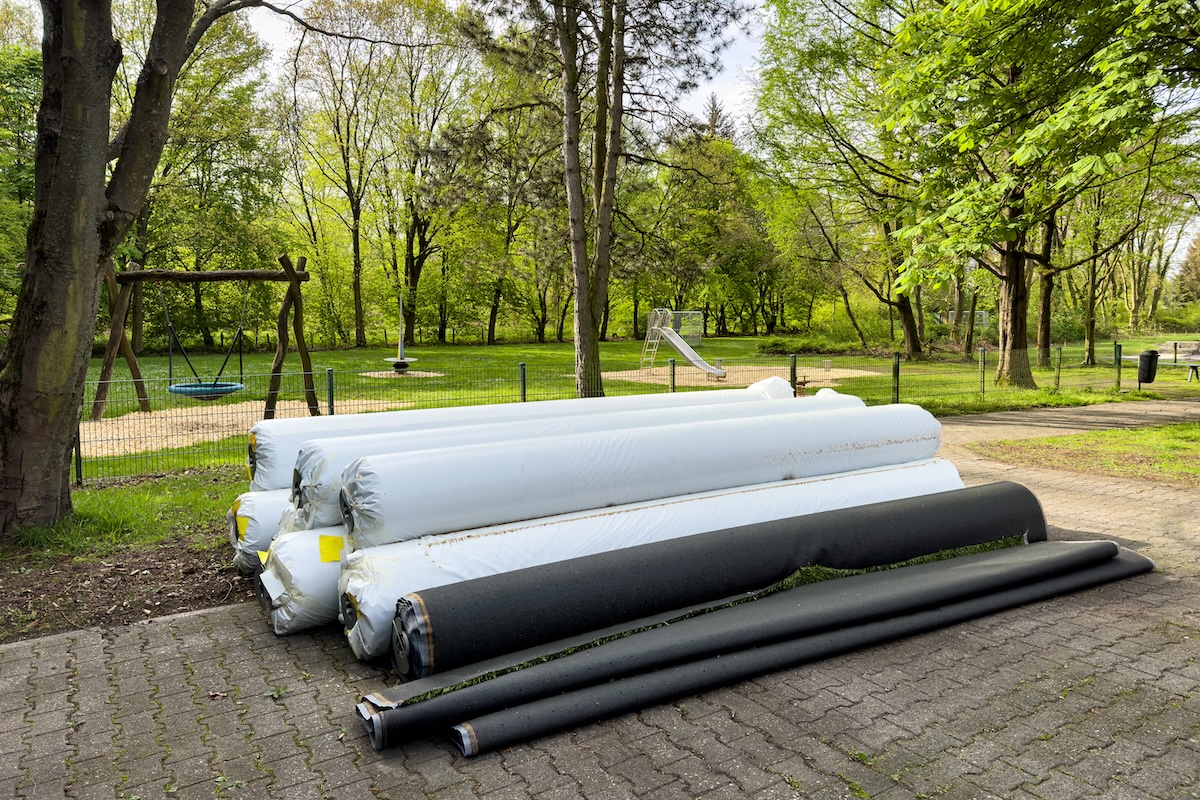
Knowing how remnants are created clarifies what they are—and what they aren’t. They aren’t factory rejects, used turf, or low-grade substitutes. They’re simply the result of how large projects and mass manufacturing naturally leave behind usable, high-quality material that would otherwise sit idle in storage.
Ideas for Using New Artificial Turf Remnants
Artificial turf remnants can serve in a wide range of applications. Because they’re made from the same materials as full-size turf rolls, they perform to the same standards when installed correctly. Their shorter lengths and variable dimensions make them particularly efficient for smaller spaces or specialized projects.
Residential Lawns/Home Landscaping
Remnant turf can be used to affordably surface compact lawns, shaded side yards, or areas where grass struggles to grow. It creates an even, low-maintenance surface that stays consistent year-round without watering or mowing. Homeowners also use it for small backyard play zones, between stepping-stone paths, or as green accents in landscape designs that combine stone and hardscaping.
Outdoor Living Areas/Pool Decks
Remnants are frequently installed around pools, pergolas, and seating areas as a slip-resistant, barefoot-friendly surface that stays cooler than pavers. Because they drain quickly, they help manage splash runoff while adding greenery to hardscaped zones. Shorter remnant rolls make it easier to fit these areas without extensive cutting or waste.
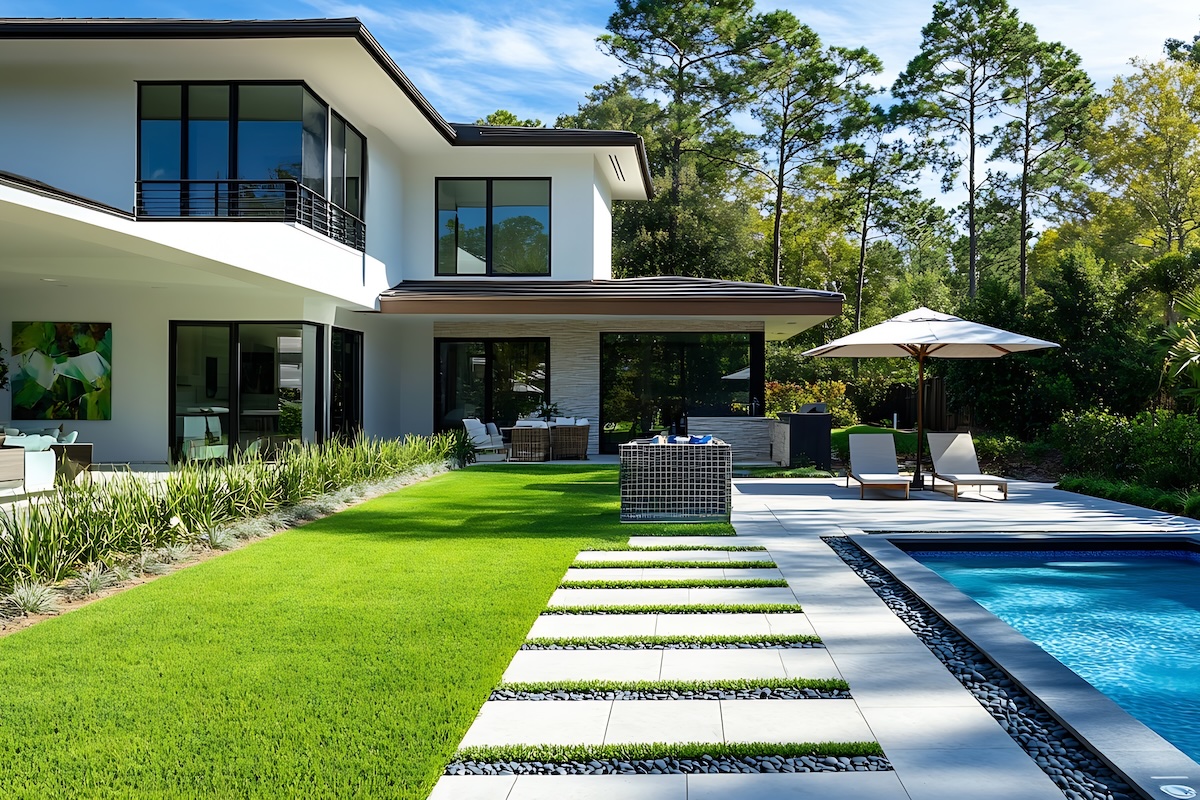
When installed around a pool deck, the turf’s backing channels splash water through the base instead of letting it collect on the surface. That makes it safer and easier to maintain, since there’s no standing water to attract algae or leave mineral stains. It also cuts down on dirt and grass clippings being tracked into the pool—something every homeowner eventually notices once they’ve replaced natural grass with turf.
Beyond pools, remnants work well for lounge areas, outdoor kitchens, or spaces between pavers where traditional sod won’t hold up. The consistent color and texture tie together patios, walkways, and seating zones without the upkeep of mowing or trimming around furniture. Because remnant rolls come in manageable lengths, they can be laid precisely around curves, posts, or planters without creating large seams or waste.
Contractors often use remnants for rooftop patios and townhouse balconies for the same reasons. The lightweight construction adds greenery and comfort without overloading deck structures, and the turf can be cut cleanly to fit between railings or architectural details. When maintained with regular brushing and the occasional rinse, the surface keeps its color and texture for years, even under heavy foot traffic or constant sunlight.
Pet Runs & Animal Areas
Artificial turf remnants perform exceptionally well in pet environments where durability, drainage, and hygiene all matter. In backyard runs, the synthetic fibers resist digging and matting, while the backing’s perforations allow water—and cleaning solutions—to pass through freely into the sub-base. This prevents puddling and keeps the surface drier and cleaner than concrete or gravel. Many installations use a compacted aggregate base topped with a thin bedding layer of crushed stone to promote consistent drainage and odor control.

For kennels, veterinary facilities, or doggy daycares, remnants offer a uniform surface that’s easy to sanitize and gentle on paws. The turf stays level even under constant use, and it doesn’t develop ruts or bare spots where pets tend to pace. When paired with antimicrobial or zeolite-infused infill, it helps neutralize odors and bacteria without relying on harsh chemicals. Because the turf fibers are UV-stabilized and non-absorbent, they hold their color and resist staining from waste or cleaning agents.
In smaller residential applications—like patios, balconies, or indoor pet areas—remnants can be cut into modular pads for easy handling and replacement. Homeowners often use them under litter boxes, on apartment balconies, or as portable potty areas for dogs in high-rise settings. These pads can be lifted, rinsed, and reinstalled in minutes, offering a cleaner and more comfortable alternative to disposable mats or artificial grass rugs.
For larger kennels or multi-run setups, using remnants also makes maintenance more efficient. Sections can be replaced individually if damaged, and because roll widths are standardized, installers can cut matching panels with minimal waste. The result is a long-lasting, low-maintenance surface that holds up to constant traffic while keeping facilities sanitary and visually tidy.
Golf Putting Greens
Remnant turf is ideal for personal putting greens, chipping areas, or short game practice zones. Its compact roll size allows for custom layouts in backyards, garages, or training facilities. Short-pile remnants mimic the roll speed of natural greens, while taller fibers can be layered for rough or fringe simulation.
Athletic, Gym, and Training Surfaces
Many training facilities and sports organizations use remnants for indoor lanes, sprint tracks, batting cages, or warm-up areas. The turf provides traction and cushioning, protecting subfloors while supporting repetitive movement. Smaller remnant sections can also be used in home gyms or garages to create functional zones for sled pushes, stretching, or bodyweight exercises.
Baseball & Softball Pitching Mats
One of the most common and straightforward uses for turf remnants is in baseball and softball training. Many pitching mats and bullpen lanes are made entirely from new remnant turf because it provides the same traction, shock absorption, and wear resistance as full field turf—just cut to size. The dense fiber structure holds up to repeated cleat rotation and drag from a pitcher’s stride without tearing or flattening.

Remnant turf also makes it easy to build custom practice areas. Coaches and facility managers can install narrow strips in batting tunnels, portable mounds, or along indoor training lanes. The smaller roll lengths fit perfectly within standard cage dimensions, and the turf can be removed, re-rolled, or replaced section by section as it wears.
For backyard or garage setups, remnants are just as practical. A 10- or 12-foot section can create a personal pitching area that feels stable underfoot and drains quickly after rain. When paired with a throw-down plate or portable mound, it recreates the feel of a professional surface without the cost or space requirements of a full field installation.
Because the material is new, rather than being made up of random pieces of recycled or reused material, it maintains consistent friction and fiber rebound. The combination of durability and affordability is part of why some indoor facilities and local programs use remnant turf for pitching mats and bullpen areas.
Temporary Decorative Installations
Event planners and designers often turn to remnant turf for trade shows, corporate events, outdoor exhibitions, or hospitality areas. It installs quickly, provides a clean and uniform finish, and can be rolled up for reuse. Its durability makes it a reliable temporary flooring solution for spaces that need both visual polish and easy cleanup.
Balconies, Rooftops, and Courtyards
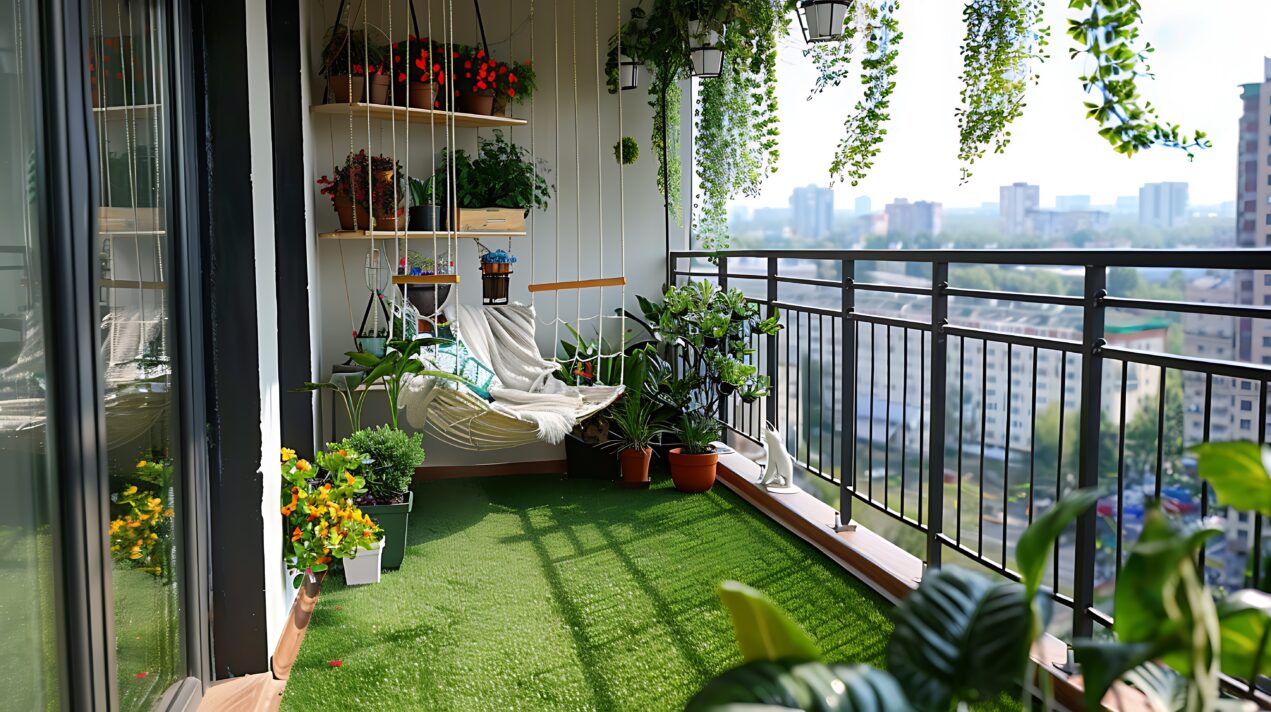
In urban spaces, remnants transform hard rooftops and terraces into usable outdoor environments. The lightweight profile adds greenery where planting is impossible, improving aesthetics and reducing surface heat. Smaller remnant cuts fit easily between structural elements or along parapet walls.
On rooftops, remnants can be installed over a drainage mat or shock pad to create a soft, stable surface for seating, dining, or recreational areas. The turf helps control surface temperature by reducing the heat reflection common to concrete and pavers, making the space more comfortable during summer months. The permeable backing allows rainwater to pass through freely, keeping the surface usable shortly after storms without standing water or mud.
In courtyards and shared community spaces, remnant turf helps define gathering zones and pathways without introducing the maintenance burden of natural grass. It stays level under frequent foot traffic, withstands outdoor furniture placement, and maintains color uniformity even in shaded or partially covered areas. Because remnants come in shorter lengths and standard widths, installers can tailor them precisely to fit around planters, posts, and built-in seating without the waste or excess cost of full rolls.
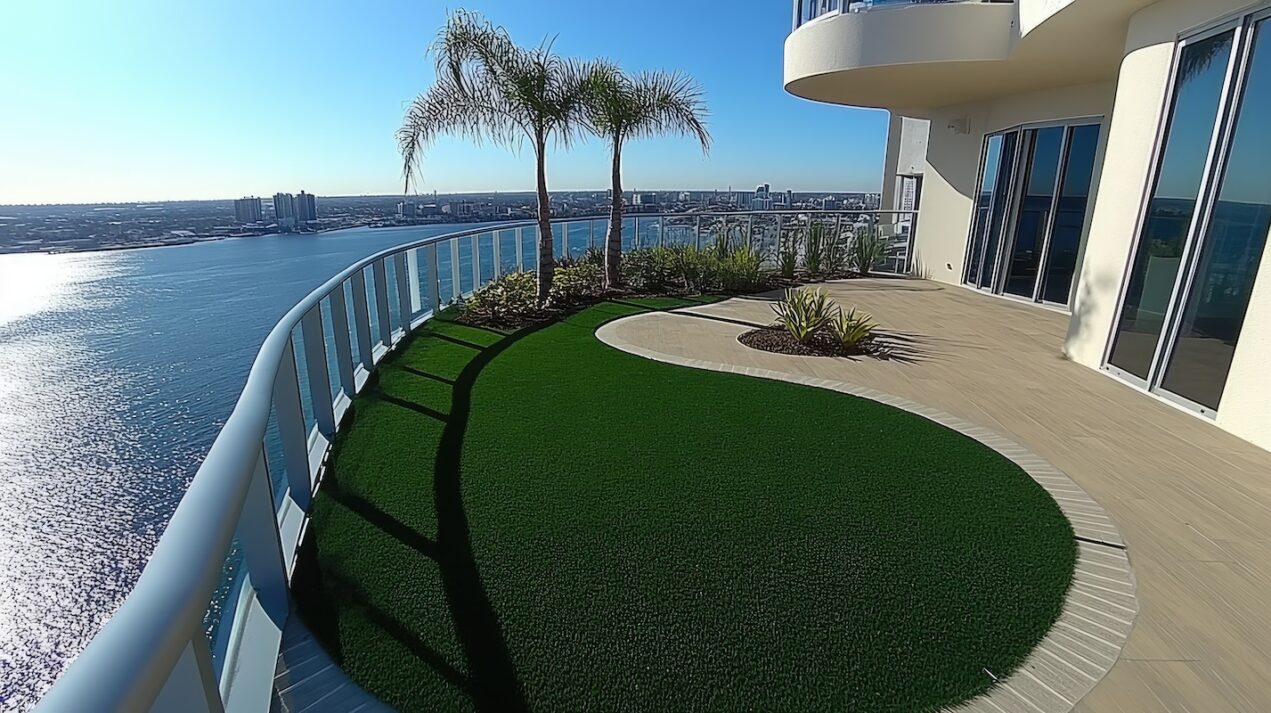
Condo/townhouse/apartment balconies benefit in much the same way. Compact sections of turf soften the feel underfoot, reduce glare from reflective deck coatings, and improve the appearance of small private terraces. When laid with a drainage layer, they allow for easy cleaning and airflow beneath the surface. For property managers and designers, this makes new remnants a practical finishing material for adding livable quality to high-density developments where green space is limited.
Commercial & Municipal Landscaping
Property managers and contractors use remnants to line medians, roundabouts, or building perimeters where natural grass would be costly to maintain. The consistent appearance reduces maintenance cycles and water use, particularly in high-visibility commercial areas.
Schools/Rec Centers
Remnants are common in playgrounds, outdoor classrooms, and recreation zones at schools or daycare centers. They provide consistent traction, quick drainage, and low maintenance compared to mulch or sod. These smaller-scale installations often benefit from remnants because they require precise cuts to fit irregular play areas.
Construction & Ground Protection
Remnant turf can serve as temporary surface protection during construction or outdoor events. It stabilizes soil, prevents mud tracking, and keeps work sites accessible after rain. After use, it can be rolled up, cleaned, and reused across multiple projects.
Common Misconceptions About Turf Remnants
Because the word remnant often gets used in retail settings to describe leftover or discounted goods, artificial turf remnants are frequently misunderstood:
- One of the most persistent misconceptions is that remnants are defective. In practice, turf classified as remnant is rarely damaged or rejected for performance reasons. Most of it was trimmed from full rolls after a project layout changed or when production batches exceeded an order’s final size. The fibers, stitching, and backing remain identical to the rest of the run. Minor variations in shade or pile density may occur between batches, but they’re typically cosmetic rather than structural.
- Another common misunderstanding is that remnants are previously installed turf. This confusion stems from how some suppliers also sell used turf—material removed from stadiums or sports fields after its service life. Used turf can show wear, compaction, or adhesive residue; new remnants do not. They’ve never been installed, cleaned, or refurbished. Knowing the difference between remnant and used prevents misaligned expectations about longevity and condition.
- Some buyers also assume remnants are older stock or “second-generation” products that didn’t meet current specifications. While that can happen when manufacturers retire an older product line, age alone doesn’t diminish performance. Artificial turf is made from stable, UV-resistant polymers designed to last years in outdoor environments. Stored properly, even older rolls retain their strength, color, and drainage characteristics.
- There’s also the idea that remnants are only useful for temporary or low-quality installations. In practice, many professional projects—batting cages, training facilities, rooftop spaces, and small lawns—use remnant rolls intentionally. Their shorter lengths make handling easier, and the cost savings allow for thicker pile or upgraded infill materials without exceeding a project’s budget. Contractors often choose remnants deliberately when square footage is limited.
- Some believe remnant turf can’t be installed seamlessly or won’t perform as well when joined. When handled correctly, seams in remnant installations are no more visible than in full-roll projects. Professional installers align fiber direction, use heat-bonded seam tape, and compact infill uniformly to ensure consistent performance across panels.
As you can see, new artificial turf remnants are not defective, used, or inherently lower in quality. They’re simply the practical result of how large projects and manufacturing runs leave behind smaller quantities of perfectly good material.
Final Thoughts
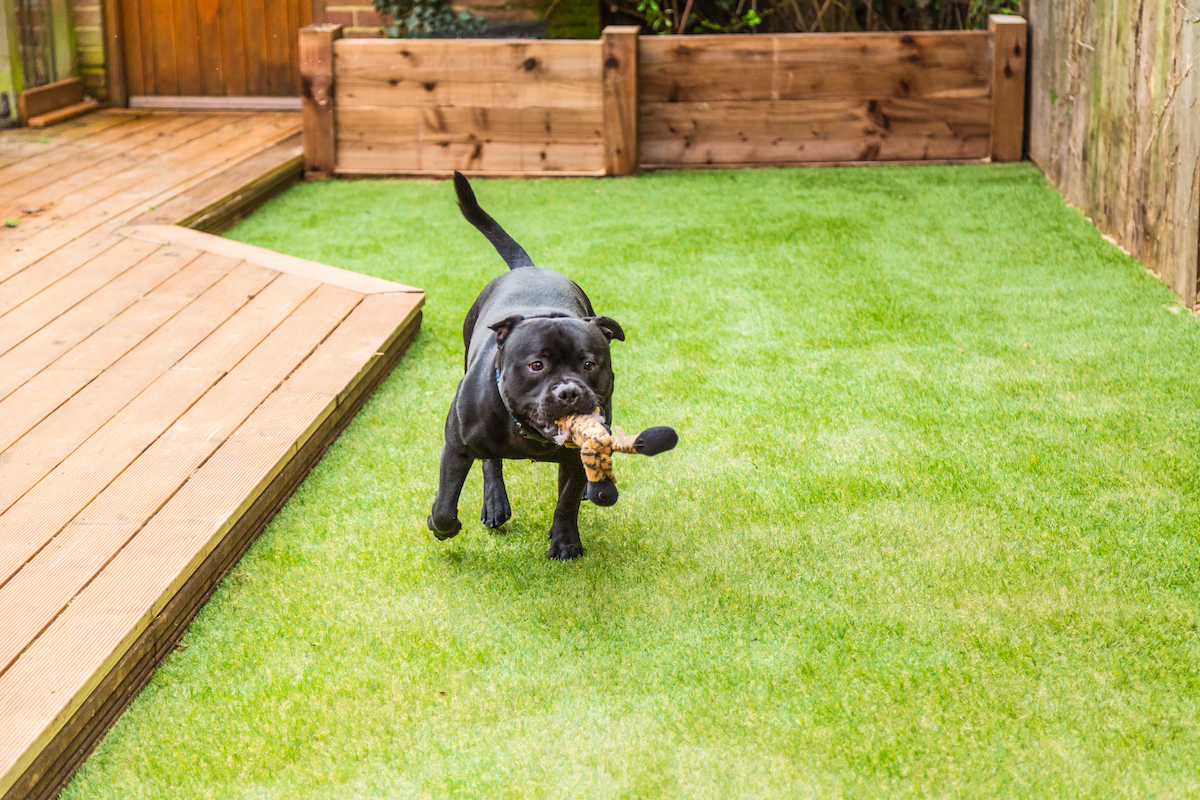
When you’ve worked around enough fields and yards, you start to see how much high-quality material goes completely unused. New turf remnants are part of that story—shorter rolls left over from full production runs, still brand new, still built to last. They’re not seconds or hand-me-downs; they’re just the right size for the kind of projects most people actually have.
Especially when you’re resurfacing a small lawn, making a pitching mat/batting cage, or trying to finish a patio, there’s no reason to overlook remnant pieces. They install the same way, drain the same way, and hold up just as well when the base is done right. You just need to measure carefully, line up the fibers, and make sure the seams are tight. After that, it’s the same reliable surface you’d get from any full-sized roll.
Remnants make practical sense. Like used artificial turf turf, using remnants can help keep good turf out of landfills, and they give smaller projects access to the same quality materials used on big jobs. For homeowners, that means a professional-looking yard without wasting money or materials. For contractors, it means being able to say you built something solid and cost-efficient—it’s just smart use of what’s already there.
Ready to Talk Turf?
Have questions about your project or want help figuring out what will work best for your space? Our team can help walk you through new/used/remnant turf options, installation details, and more. Call (828) 518-5787 or click here to email us!

